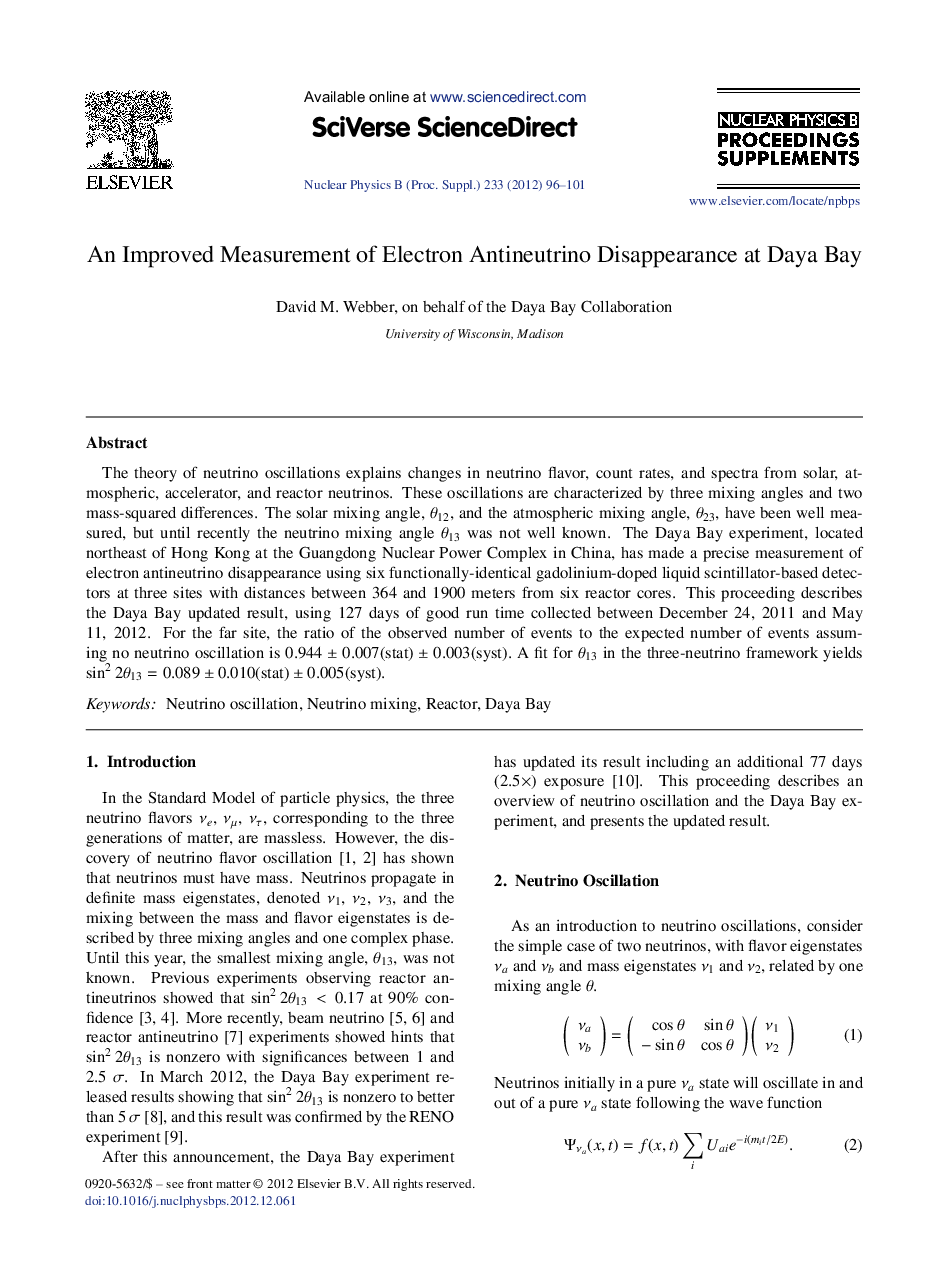| Article ID | Journal | Published Year | Pages | File Type |
|---|---|---|---|---|
| 8185503 | Nuclear Physics B - Proceedings Supplements | 2012 | 6 Pages |
Abstract
The theory of neutrino oscillations explains changes in neutrino flavor, count rates, and spectra from solar, atmospheric, accelerator, and reactor neutrinos. These oscillations are characterized by three mixing angles and two mass-squared differences. The solar mixing angle, θ12, and the atmospheric mixing angle, θ23, have been well measured, but until recently the neutrino mixing angle θ13 was not well known. The Daya Bay experiment, located northeast of Hong Kong at the Guangdong Nuclear Power Complex in China, has made a precise measurement of electron antineutrino disappearance using six functionally-identical gadolinium-doped liquid scintillator-based detectors at three sites with distances between 364 and 1900 meters from six reactor cores. This proceeding describes the Daya Bay updated result, using 127 days of good run time collected between December 24, 2011 and May 11, 2012. For the far site, the ratio of the observed number of events to the expected number of events assuming no neutrino oscillation is 0.944±0.007(stat)±0.003(syst). A fit for θ13 in the three-neutrino framework yields sin22θ13=0.089±0.010(stat)±0.005(syst).
Related Topics
Physical Sciences and Engineering
Physics and Astronomy
Nuclear and High Energy Physics
Authors
David M. Webber, the Daya Bay Collaboration the Daya Bay Collaboration,
